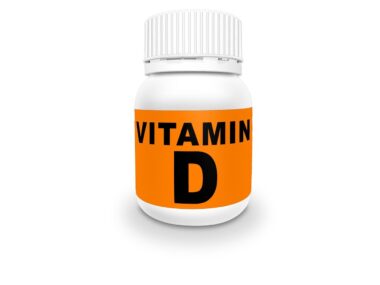Understanding Glycemic Index Information on Sports Nutrition Labels
In the realm of sports nutrition, understanding the glycemic index (GI) is crucial for athletes. The glycemic index is a numerical scale that ranks carbohydrate-containing foods based on their effect on blood glucose levels. Foods that score high on the GI can rapidly raise blood sugar. Thus, it’s essential for athletes to understand how these foods impact performance and recovery. Sports nutrition labels often indicate the GI, helping athletes make informed choices. Low-GI foods release glucose slowly, providing sustainable energy, whereas high-GI foods are suitable for immediate energy needs. Knowing how to interpret these labels allows athletes to optimize their nutrition strategies, ensuring they can perform at peak levels in their chosen sports. Consuming the right carbs at the right times can significantly influence training outcomes and overall athletic progress. In addition, combining GI knowledge with informed choices fosters a better recovery process following strenuous activities. For athletes, integrating glycemic index knowledge is more than just a dietary consideration; it directly correlates to improved performance and endurance during competitions.
The Importance of Monitoring Carbohydrate Intake
Carbohydrates serve as a primary energy source for athletes, making it essential to monitor intake closely. Not all carbohydrates are created equal; understanding their glycemic index can enhance energy management. Consuming high-GI foods pre-workout can provide a quick glucose boost necessary for intense exercise, while lower-GI foods promote sustained energy levels. Furthermore, timing carbohydrate intake plays a crucial role in performance. For instance, athletes may benefit from high-GI snacks immediately post-exercise to help replenish glycogen stores. Reading sports nutrition labels helps athletes discern between various carb sources. By paying attention to glycemic index ratings, athletes can strategize their fuel consumption based on personal performance goals and specific workout requirements. Keeping a balanced diet, rich in essential nutrients while strategically using high and low GI foods ensures optimal functioning during training sessions. Adopting such strategies can lead to better blood sugar regulation, which is vital for maintaining peak performance. Ultimately, a proactive approach to carbohydrate consumption can lead to enhanced endurance and agility during competitions, proving beneficial for competitive athletes.
The glycemic index is particularly vital for endurance athletes, serving as a guide on when to consume certain foods. Endurance sports often require sustained energy over long periods. By leveraging the GI, athletes can plan meal timing effectively. For instance, 30-60 minutes before an event, consuming high-GI foods can give that instant fuel. However, for longer training sessions, it’s advantageous to consume low-GI foods that can provide a steady energy release. Athletes need to pay attention to how their bodies react to these foods, as individual responses to carbs can vary significantly. Understanding personal glycemic responses makes it easier to tailor nutrition for unique energy needs. Additionally, sports drinks and gels may also carry GI information, helping fuel strategists in event preparation. It’s not just about what you consume, but also how, and when to eat during training cycles. The GI of foods can also impact hydration levels, as sugar absorption needs water. Making informed choices about carbohydrate sources according to the glycemic index can optimize an athlete’s training, recovery, and competitive performance.
Utilizing Sports Nutrition Labels Effectively
Sports nutrition labels are valuable tools, providing insights into carbohydrate quality and other essential nutrients. Understanding how to read these labels can enhance nutritional choices for athletes. Look for the glycemic index listed or check accompanying nutritional information that reveals the type of carbohydrates present, such as sugars, starches, and fibers. Moreover, the fiber content plays a role in determining food energy release, with higher fiber often indicating lower GI. Also, note the serving size indicated on the label, as it’s crucial for realizing the true impact of the carbohydrate intake on overall nutrition. Athletes should also consider ingredients; whole foods often rank lower on the glycemic index than processed options. By prioritizing whole food sources, athletes can alleviate the risks associated with excessive sugar spikes. This labeling literacy isn’t just for athletes. Coaches and nutritionists can also benefit from understanding GI when creating dietary plans. When athletes align their nutritional strategies with label insights, they can ensure optimum performance while fostering healthier long-term eating habits.
The glycemic index can be heavily influenced by food preparation and cooking methods. Processing techniques such as cooking, soaking, or pureeing can alter the carbohydrate structure, often resulting in a higher glycemic index score. For example, instant oatmeal has a higher GI compared to steel-cut oats. Thus, selecting the right food prep methods is insightful for athletes. Baking and steaming are generally preferred preparation methods to maintain a lower GI. Also, combining high-GI foods with protein and fats can mitigate blood sugar spikes. Including ingredients like nuts or yogurt with a high-GI carbohydrate can create balanced meals that better support athletic performance. Additionally, athletes should be cautious when purchasing packaged foods labeled as “healthy.” Always check for added sugars that can elevate GI without offering beneficial nutrients. Nutritional education encourages athletes to experiment with different foods and monitor their individual responses. This process leads to enhanced meal planning tailored specifically to each athlete’s lifestyle and training demands. Therefore, a proactive and informed dietary approach incorporating GI knowledge creates a positive ripple effect in athletic performance.
Specific Foods to Consider
When examining the glycemic index in a diet, the choice of specific foods is essential for athletes. Foods like white rice and white bread, which rank high on the GI scale, should be consumed cautiously, particularly around intense training periods. Opt for lower-GI alternatives like whole grains, legumes, and non-starchy vegetables. Some fruits, like berries and apples, offer natural sweetness with lower glycemic impacts compared to bananas or watermelon. Additionally, sweet potatoes make a nutritious, lower-GI option for carbohydrate intake. Protein sources also play a crucial role; incorporating lean meats, fish, and eggs with meals can enhance overall nutritional balance and stabilize blood sugar levels. Athletes should also consider different meal combinations during training to observe effects on their performance. Monitoring how foods affect energy levels can be beneficial for personalizing their dietary approach. Furthermore, seeking natural sources of carbohydrates, like quinoa and lentils, can support performance while minimizing GI drawbacks. This knowledge guides athletes toward healthier, more effective eating habits, crucial for long-term success in their sporting endeavors.
To conclude, understanding glycemic index information on sports nutrition labels can immensely benefit athletes. This knowledge empowers them to make informed dietary choices directly linked to their training and competitive performances. It is essential to view nutrition through a strategic lens, focusing on carbohydrate types, sources, and timing based on glycemic responses. The key to successful athletic performance lies in not only eating the right foods but also in managing meal timing and preparation methods. By embracing these nutritional principles, athletes can ensure they achieve optimal energy management during training and performances. This understanding promotes a balanced diet that aids recovery and boosts overall well-being, allowing athletes to perform at their best while minimizing fatigue. As each athlete is unique, experimentation with different foods while monitoring effects will yield personalized results. To facilitate success in this endeavor, integrating knowledge about sports nutrition labels into daily routines is paramount. Athletes armed with this understanding will foster optimal health and performance, making them more efficient in their training and competitions.
Ultimately, the relationship between glycemic index, nutrition labels, and athletic performance is undeniably significant. By purposefully applying GI insights, athletes can effectively bridge the gap between dietary intake and performance output. Comprehending the intricacies of carbohydrate quality allows for informed decisions that yield lasting benefits. In addition, athletes should actively engage with their food choices, fostering an engaged approach towards their nutrition. Utilizing this understanding not only enhances performance but also sets up a foundation for long-term health and fitness lifestyles. It opens up an array of food choices that cater to each athlete’s unique requirements. Furthermore, having comprehensive knowledge of the glycemic index written on nutrition labels helps in creating meal plans that support recovery and training demands. As sports science continues to evolve, so will the strategies athletes use based on these nutritional principles. By making conscientious dietary choices and monitoring their effects on performance and recovery, athletes can successfully navigate the complexities of nutrition and train efficiently towards their goals.





